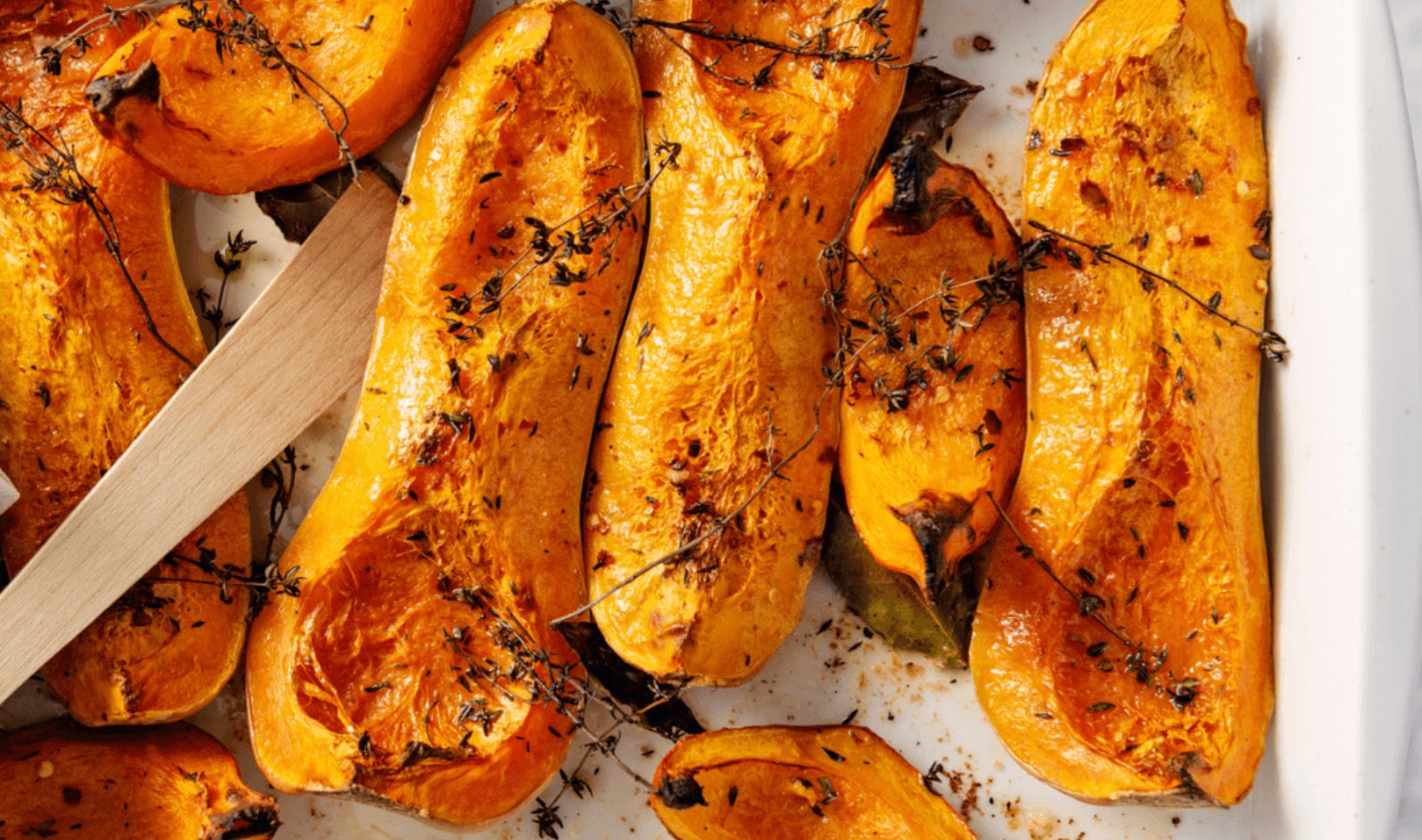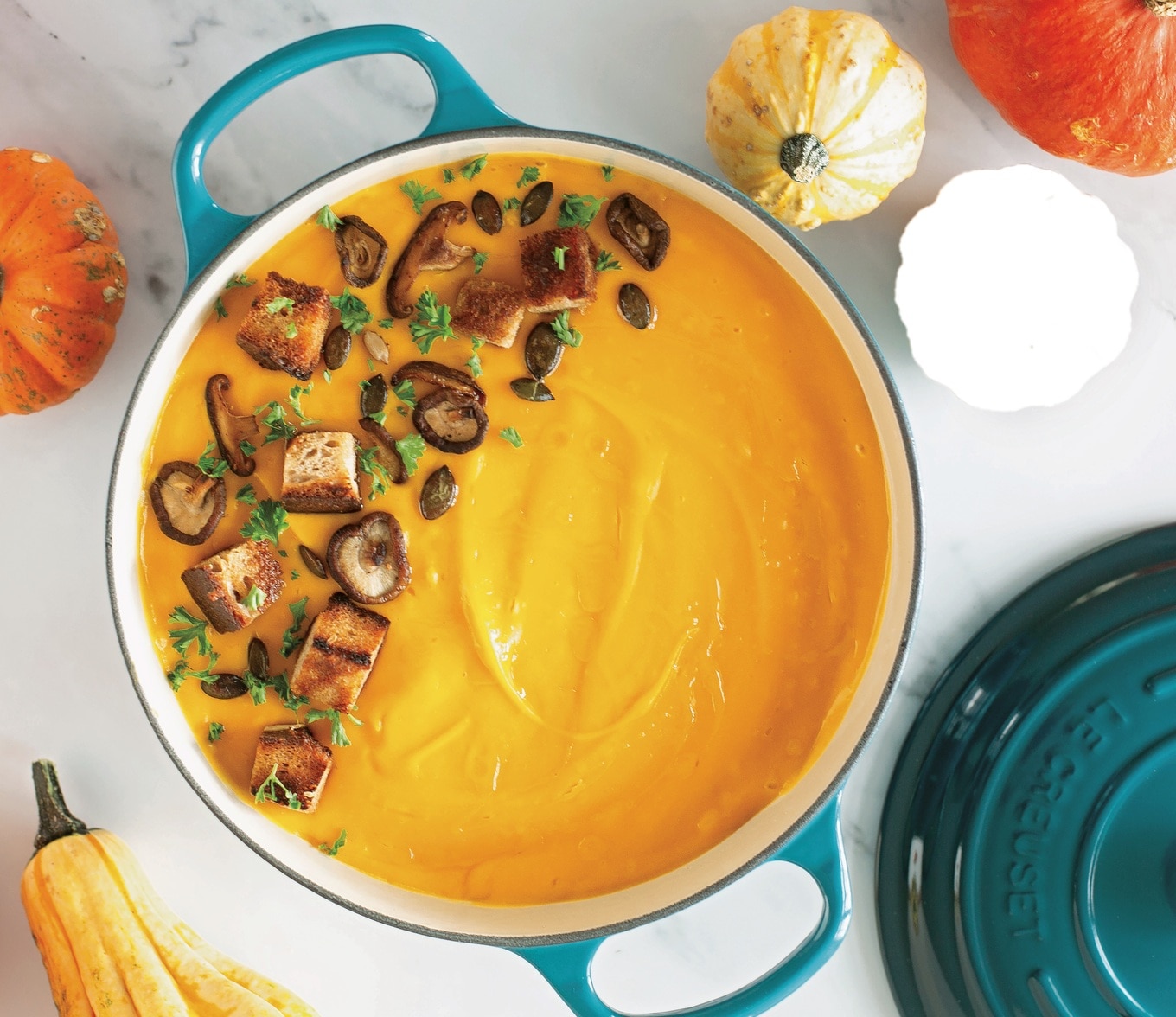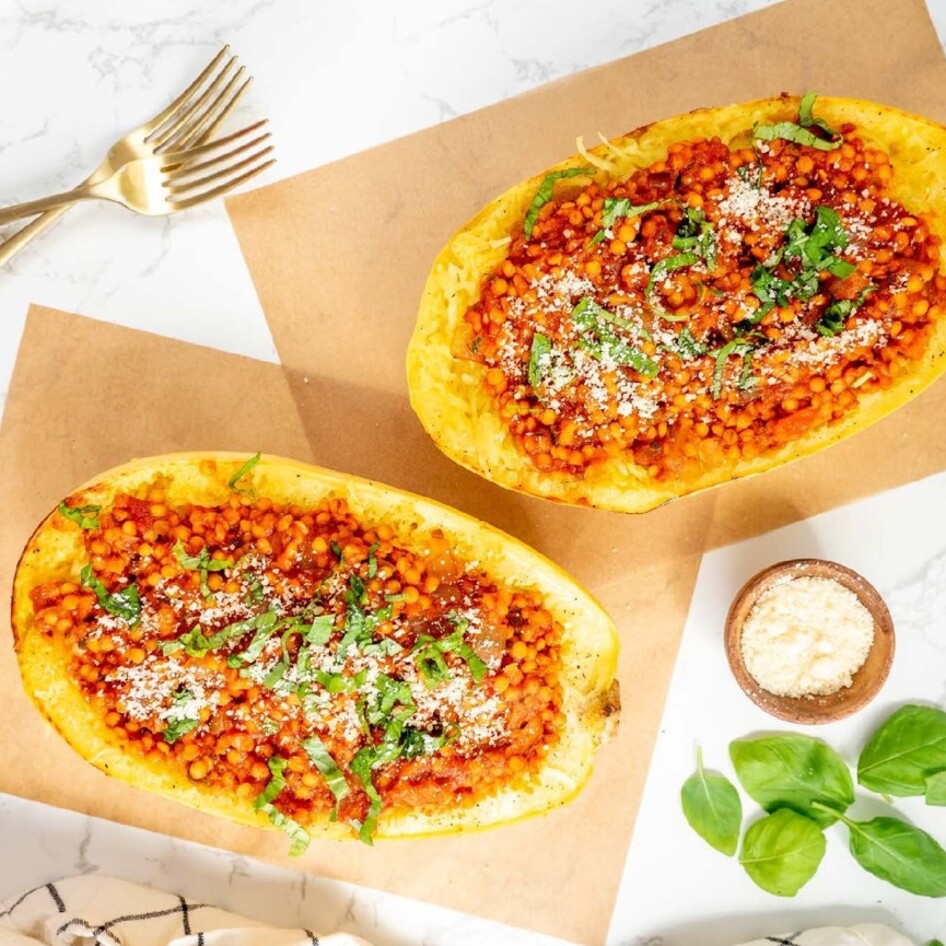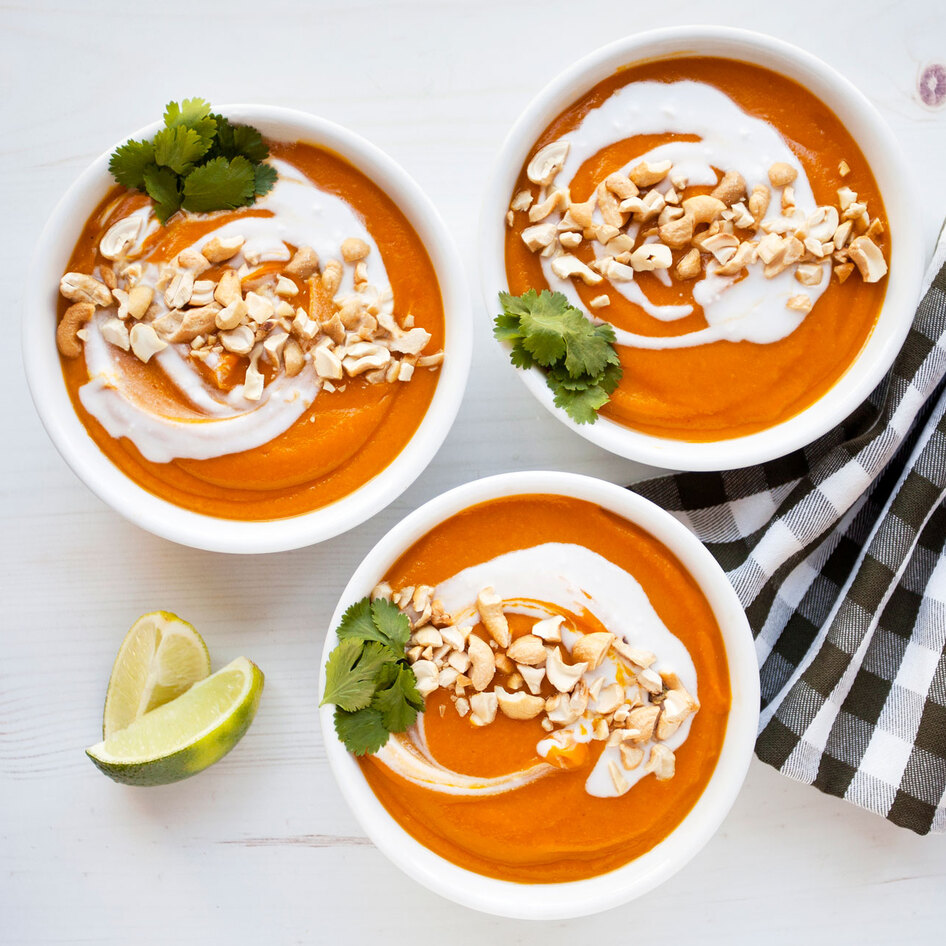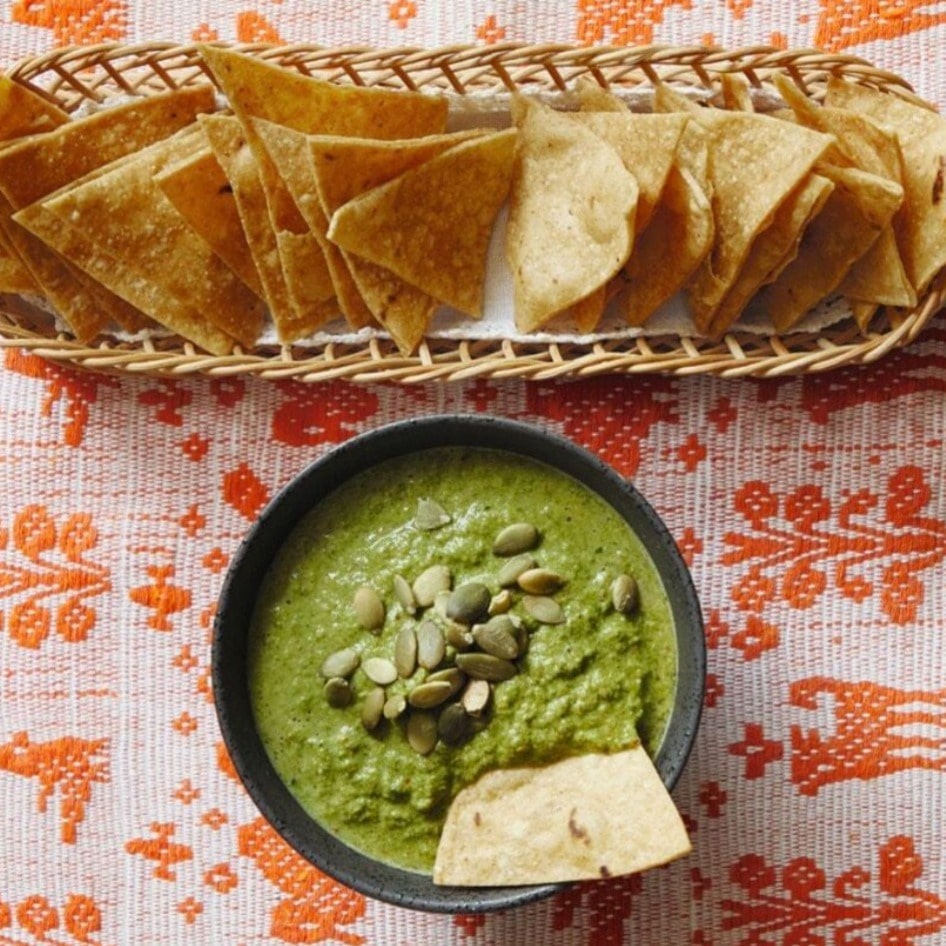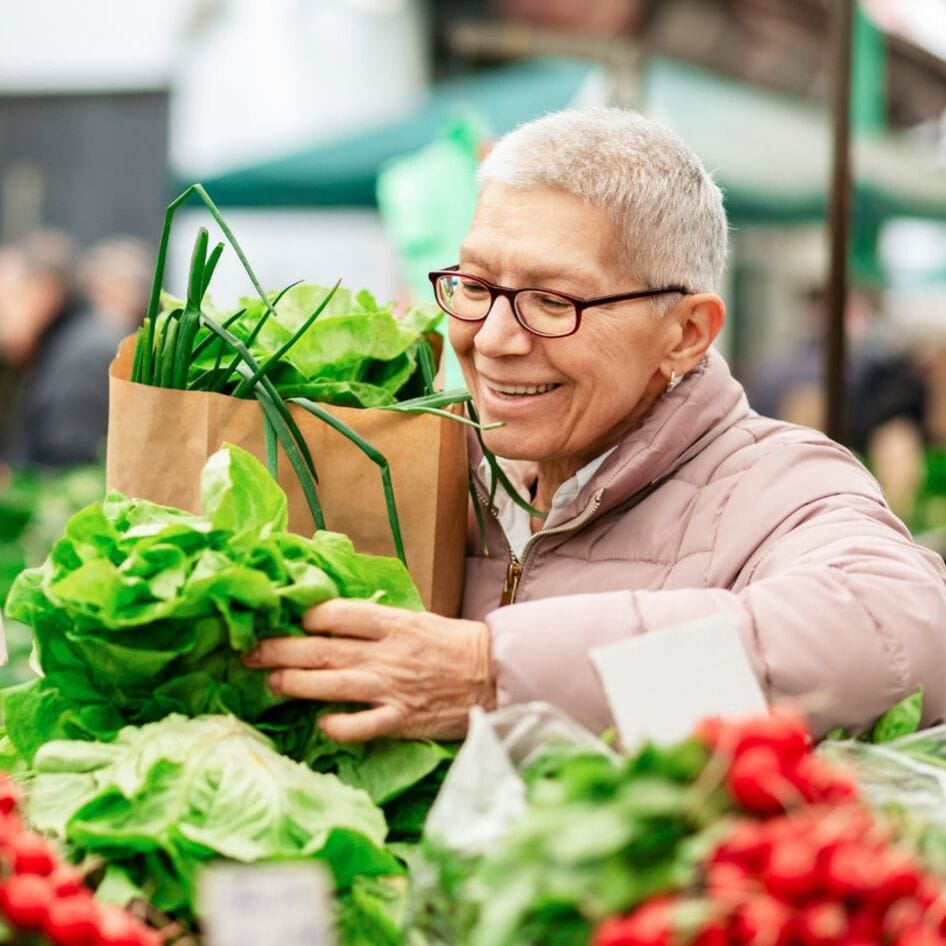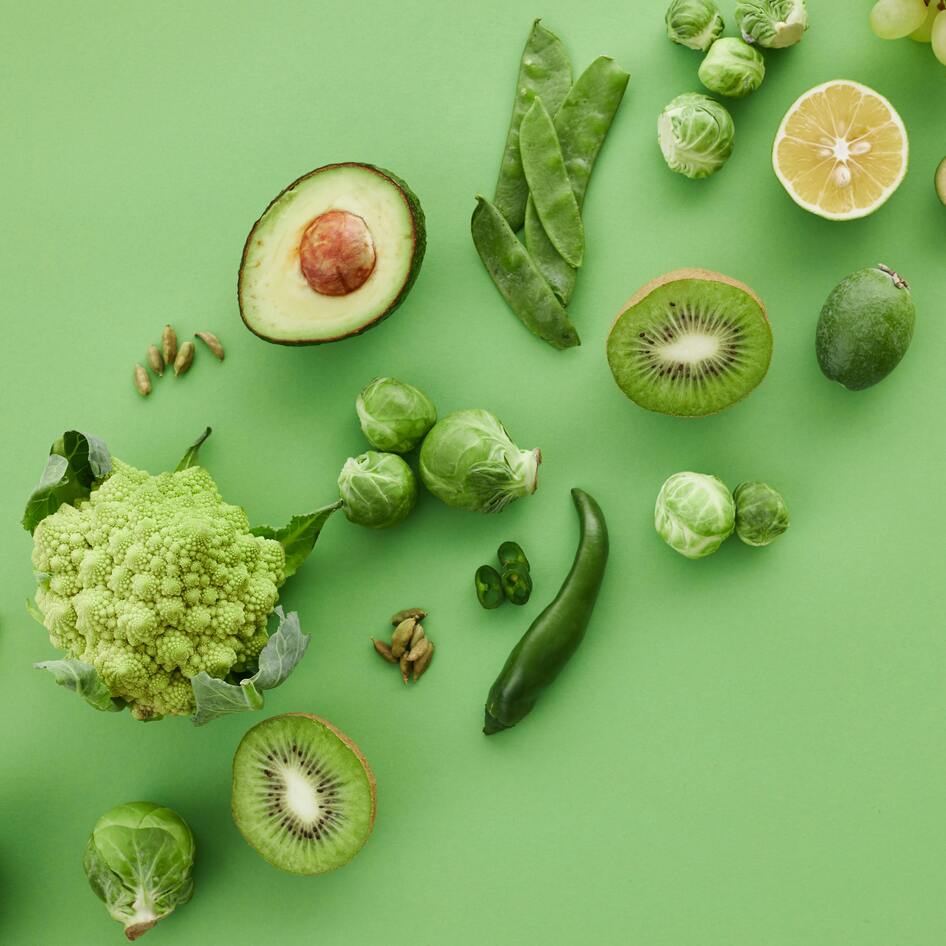Fall and winter bring some of our favorite seasonal ingredients, such as apples, cranberries, Brussels sprouts, and winter squash. Tender and nutty with undertones of sweetness when cooked, winter squash refers to pumpkins, butternut squash, acorn squash, and other squashes that are ready for harvest in fall, starting around late September. Not only is it versatile and varied, winter squash also packs health benefits, thanks to its vitamin and mineral content.
Winter squash nutrition
The many winter squash varieties you’ll find in stores are vastly different in shape, size, texture, and color, but generally share the same nutritional content.
They’re rich in alpha-carotene and beta-carotene, which the body converts into vitamin A (retinol). It’s also why winter squashes range from yellow to orange on the inside. The deeper the orange hue, the higher the beta-carotene content.
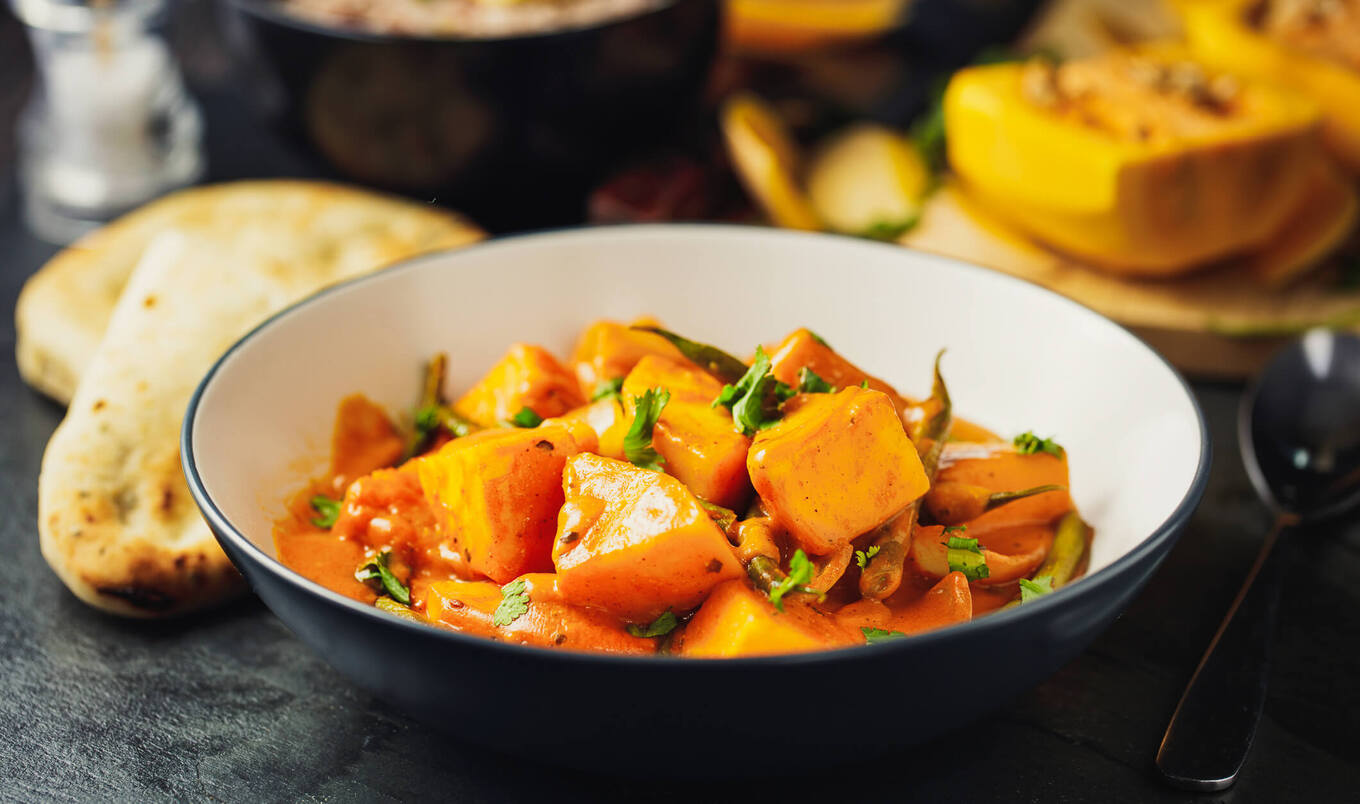 Hao Liang
Hao Liang
“When thinking of vitamins, I like to group them into colors. Usually each color, in broad terms, represents a different nutrient,” Rhyan Geiger, RDN and owner of Phoenix Vegan Dietitian, tells VegNews. “That’s why it’s so important to eat the rainbow to get a variety of vitamins and nutrients.”
Winter squash also contains important nutrients, such as vitamin C, dietary fiber, and minerals like folate, magnesium, and potassium.
Health benefits of winter squash
Your body converts alpha-carotene and beta-carotene into vitamin A (retinol), an essential vitamin that helps with healthy skin and mucous membranes, vision and eye health, and your immune system.
Like other carotenoids, they are also antioxidants, a compound that inhibits oxidation, a chemical reaction that can lead to the production of free radicals. High levels of free radicals are linked to a higher risk of cancer, diabetes, and heart disease.
Vitamin C, also an antioxidant, is known to boost your immune system and fight inflammation, a precursor to many chronic diseases. It may help lower high blood pressure and protect against heart disease. This powerful vitamin also helps improve iron absorption, particularly for people who follow a vegan diet.
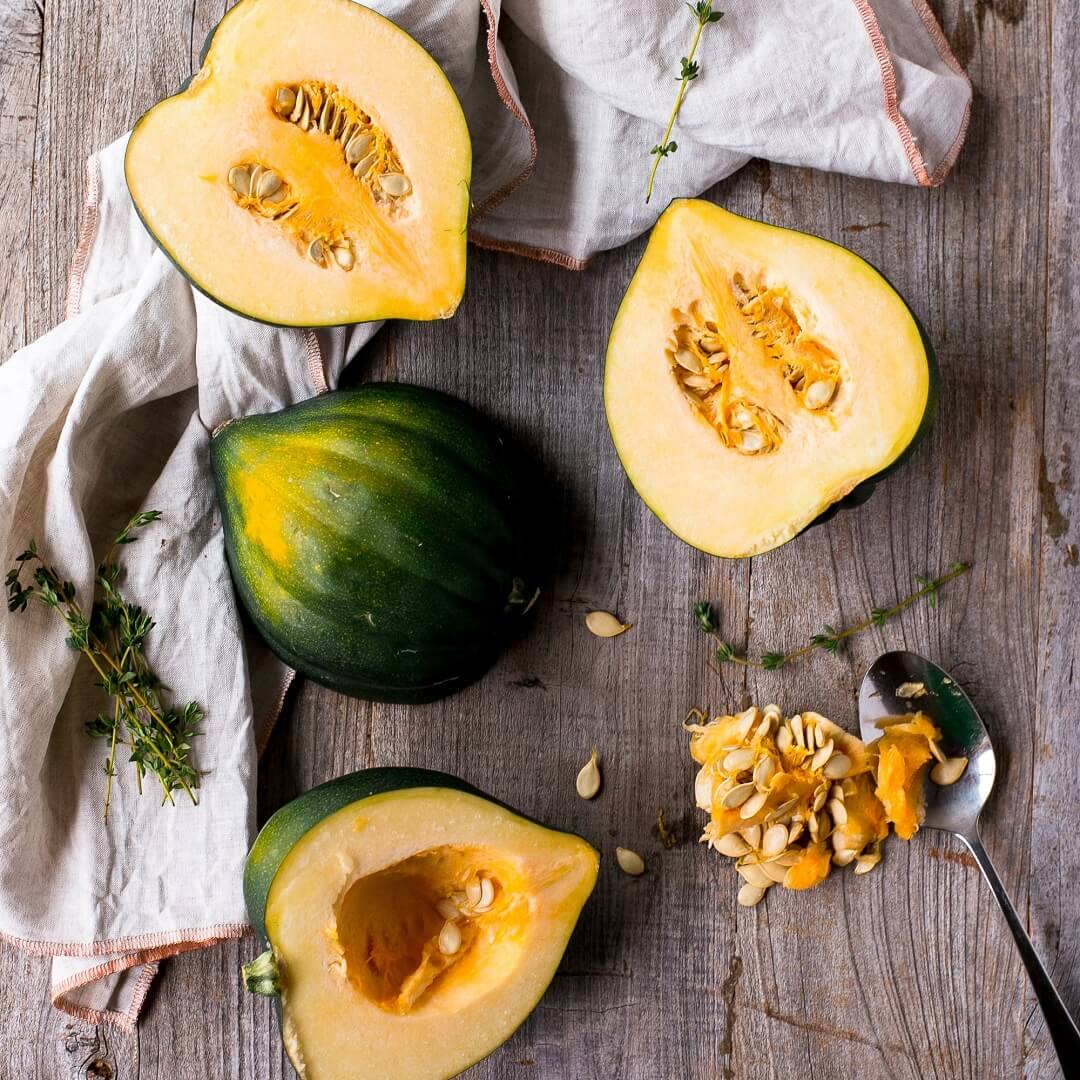 Kim Daniels
Kim Daniels
Folate, or vitamin B9, is necessary for producing red and white blood cells in your bone marrow, converting carbohydrates into energy, as well as making DNA and RNA. Potassium metabolizes carbohydrates, synthesizes protein, helps regulate your heartbeat, and ensures that your muscles and nerves are in working order. Magnesium turns food into energy, creates protein, and regulates the nervous system.
Generally, a diet rich in plant-based foods is associated with a lower risk of multiple chronic diseases, including certain forms of cancer, heart disease, and Type-2 diabetes as well as lower blood pressure. They’re also rich in fiber, which helps improve digestive health and is known to diversify your gut microbiome, Geiger says.
“Some studies have also shown improved insulin sensitivity and reduced inflammation when eating fiber-rich foods like pumpkin or acorn squash,” she adds.
How to use winter squash seeds
Don’t throw away the seeds when you buy a whole winter squash, like pumpkin or butternut squash. Geiger says that “seeds are a source of protein and fat and have vitamins like vitamin A, vitamin C, folate, potassium, calcium, and iron.”
Roasted seeds can be used as a topping for soup, salads, grain bowls, and stuffed winter squash. To make roasted seeds, preheat your oven to 350 degrees Fahrenheit.
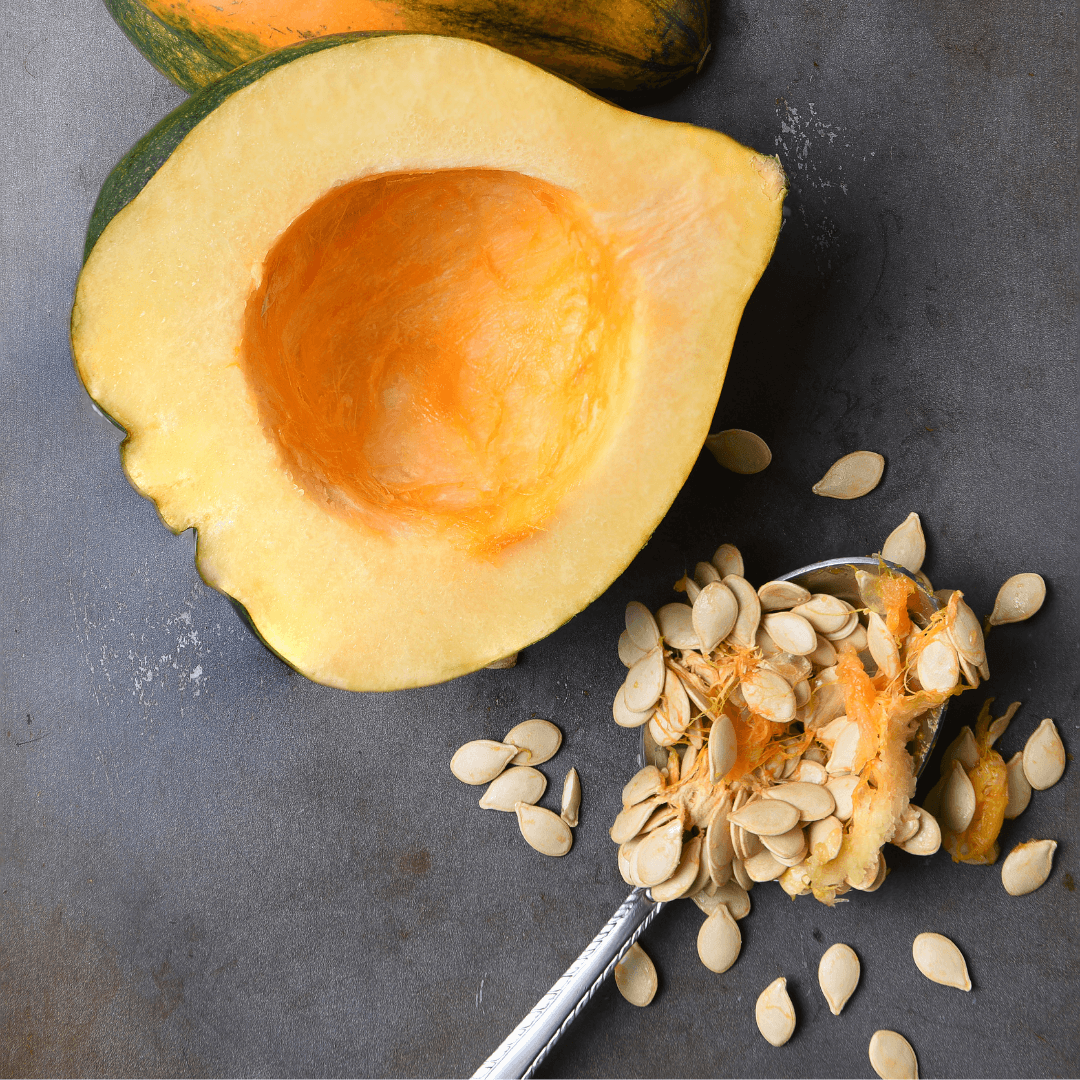 Canva
Canva
Scoop out the seeds and transfer them to a colander. Rinse the seeds, under cold running water, using your fingers to loosen the gunk and strands. Pat them dry—excess water will turn into steam in the oven and prevent the seeds from browning.
Add the seeds to a bowl and toss them with salt, pepper, and olive oil. You could also add additional seasonings, such as a pinch of chili powder or smoked paprika. Spread the seeds evenly across a baking sheet, then bake them in the oven until golden brown around 13 minutes, stirring occasionally and rotating halfway through.
How to choose and store winter squash
When selecting a winter squash, pick one that is firm to the touch with no blemishes or soft spots. Look for a squash with dull skin and a dry or drying stem, both of which are signs of ripeness. Be sure to check the stem for signs of mold. Store winter squash in a cool, dark place for up to a month.
How to cook winter squash
Winter squash can be roasted, steamed, or pureed and can be used in a wide variety of vegan recipes, from stuffed squash to risotto.
To purée winter squash
Puréed squash is good for soups, dairy-free cheese sauces, and desserts. Start with steamed or roasted squash. The latter will add more flavor to the finished dish. Blend until smooth, adding a little bit of water if necessary.
BECOME A VEGNEWS VIP: Get exclusive product deals, freebies, and perks galore!
Some varieties are good for mashing or adding to seasonal grain bowls while others make for beautiful stuffed squash centerpieces. Here are seven kinds of winter squashes and how to cook them.
To roast squash
Preheat the oven to 400 degrees Fahrenheit. Winter squash skin is generally edible when cooked, but you might want to peel the tougher-skinned varieties like butternut squash and kabocha. Halve the squash, then cut into smaller pieces if desired. Toss with a fat (like oil or dairy-free butter), salt, and pepper or, for a sweeter variety, cinnamon, nutmeg, and brown sugar, or maple syrup. Depending on the variety, roast the squash for 20 to 45 minutes, until tender.
To steam winter squash
Peel the squash if desired, remove the seeds, then cut it into one-inch cubes. The smaller the cubes, the longer it takes to steam. Add a few inches of water to a pot fitted with a steamer basket. Bring it to a boil, add the squash, cover the pot, and steam for about 15 minutes. The squash is ready when it’s easily pierced with a fork.
7 kinds of winter squash and how to use them in vegan cooking
Looking to incorporate winter squash into your diet? Try these seven varieties.
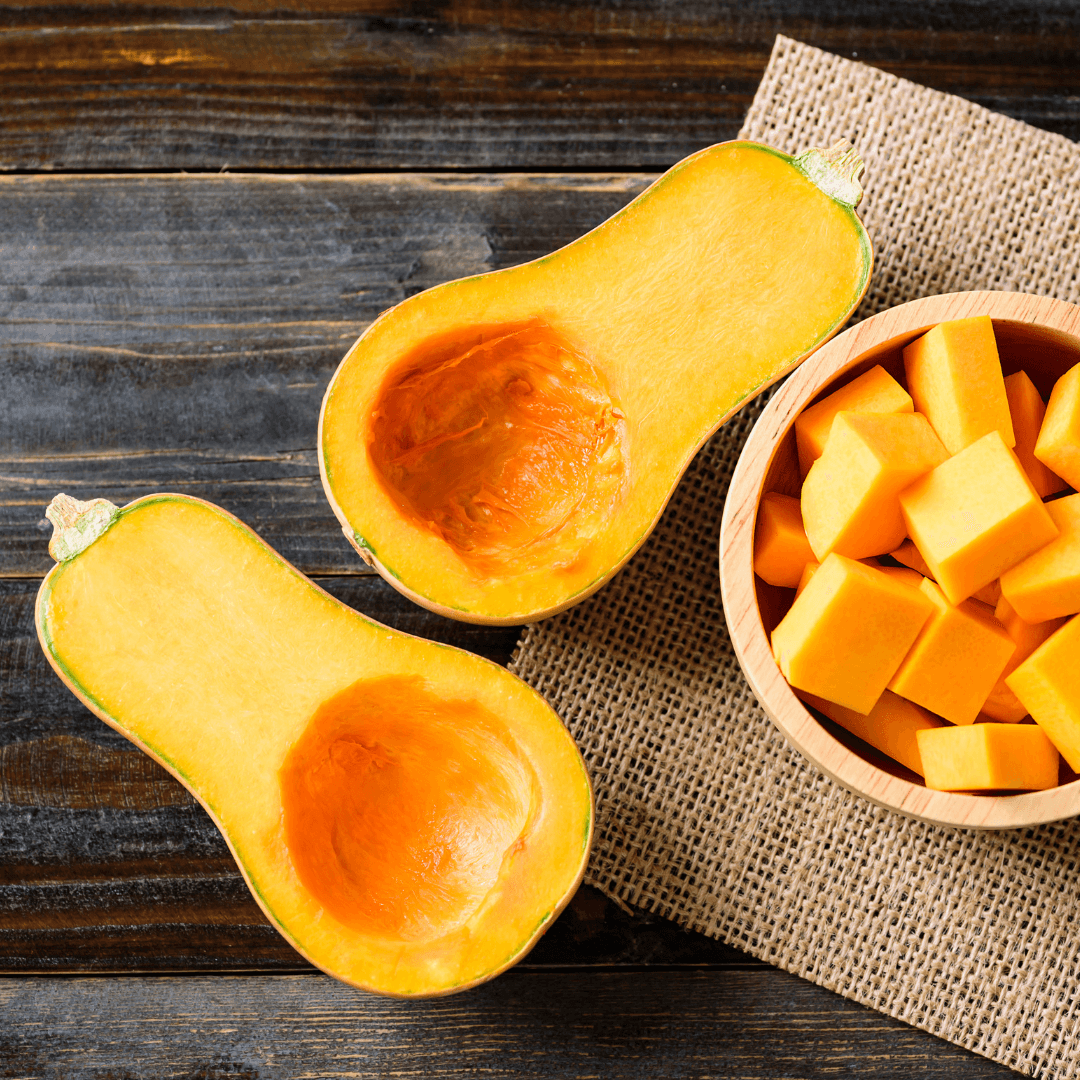 Canva
Canva
1 Butternut squash
The oblong-shaped butternut squash has smooth, dull, pale yellow skin that is edible when cooked but is usually peeled or eaten around. It has moist, bright orange flesh that’s mildly sweet and nutty-tasting.
How to use it: Butternut squash is delicious when stuffed, roasted, or mashed and paired with seasonal herbs, like sage and thyme. Check out our guide to cooking butternut squash for 15 ways to use it.
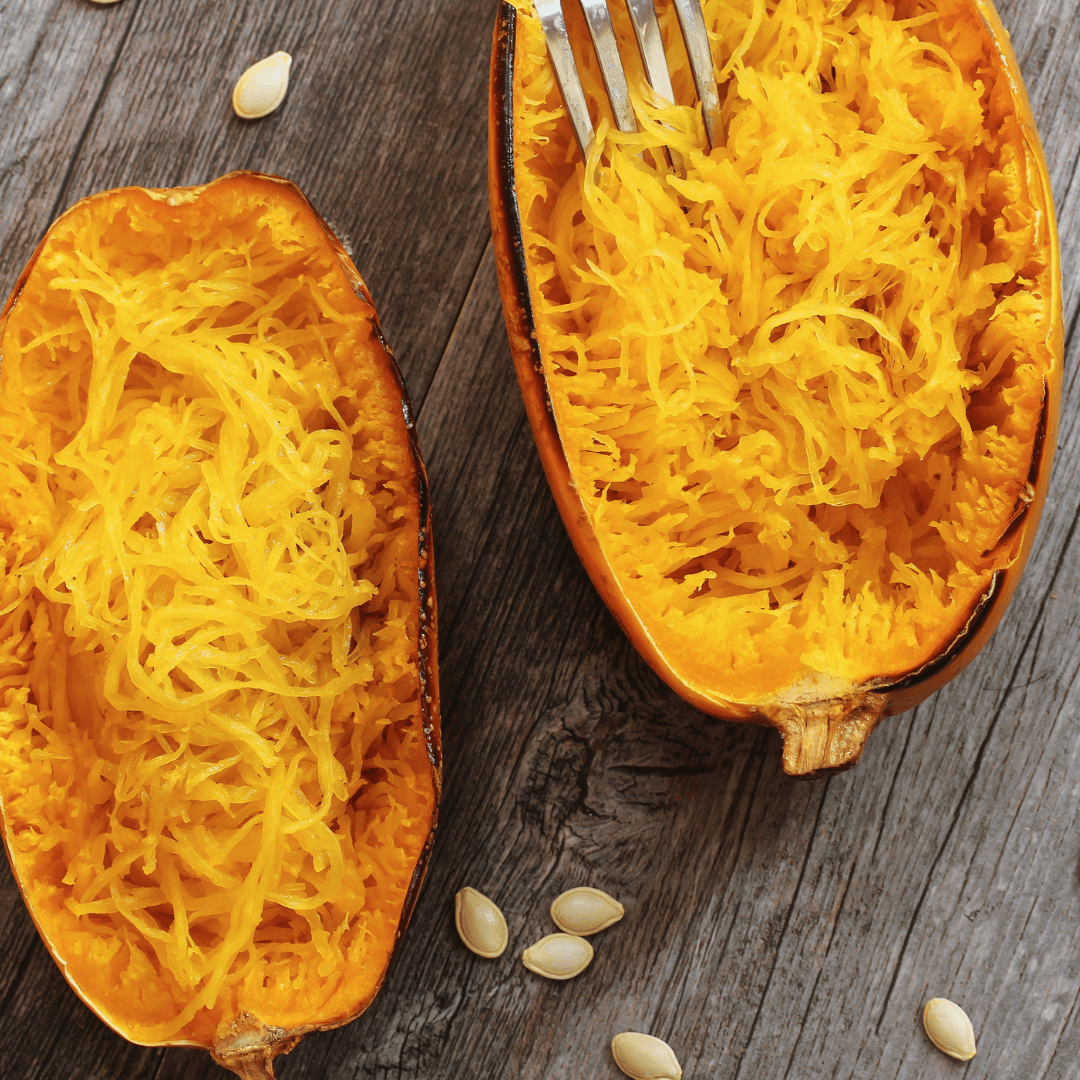 Canva
Canva
2 Spaghetti squash
This big, round yellow squash gets its name from the way its golden flesh can be “shredded” into pasta-like strands (reminiscent of angle hair pasta) with a fork when cooked. It has a mild, slightly sweet flavor.
How to use it: It’s often baked whole, then separated into “spaghetti” strands and served with sauces or used to make a casserole. It would soak up all of the flavors of this vegan mushroom bolognese.
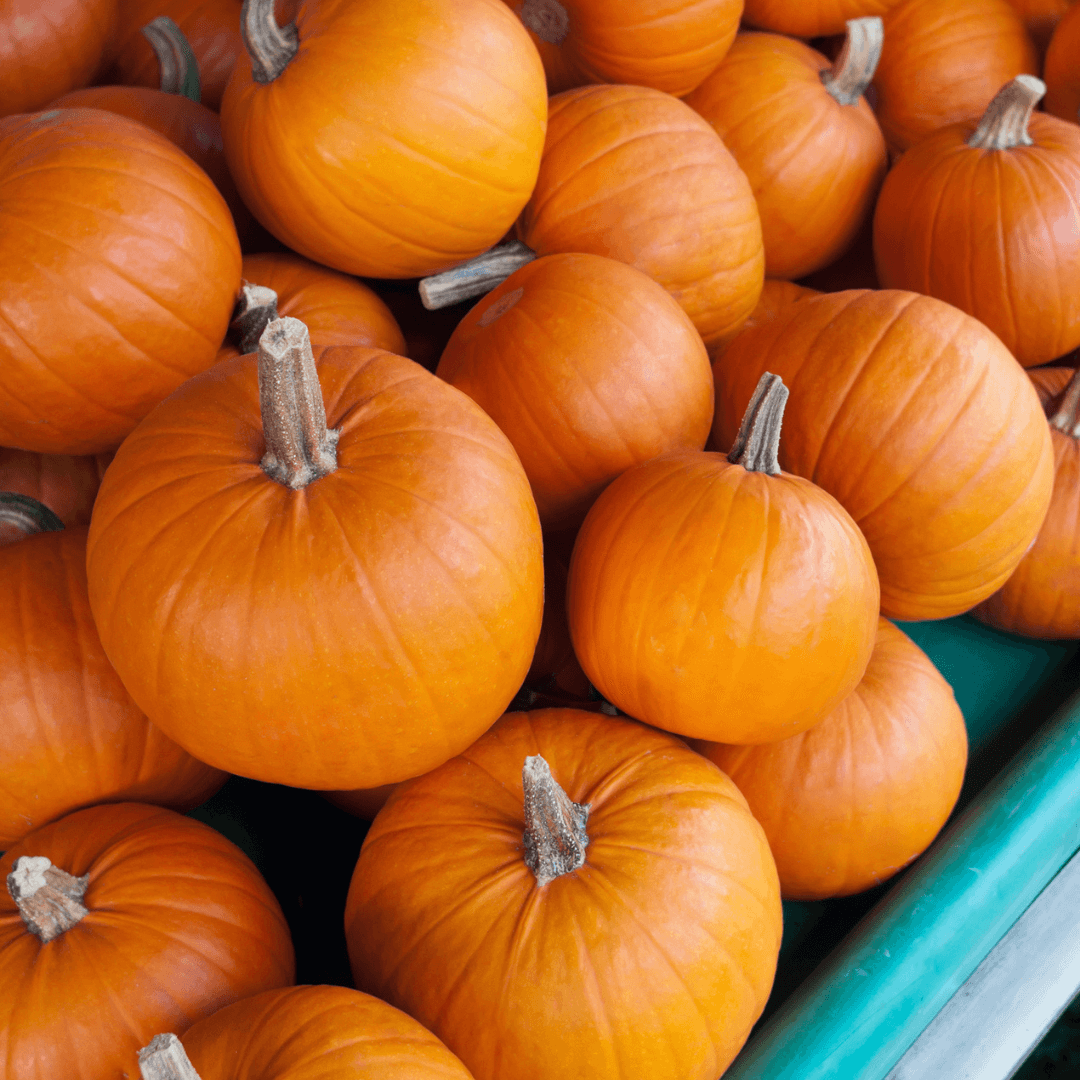 pia_ch
pia_ch
3 Sugar pumpkin
This iconic winter squash is often used for decoration, but it’s versatile in the kitchen. Sugar pumpkin varies in size, but it has firm, thick, bright orange skin and sweet, firm flesh.
How to use it: Roast it, steam it, stuff it, purée it for sauces, or use it for vegan fall desserts, such as pumpkin pie, bread, muffins, or cookies.
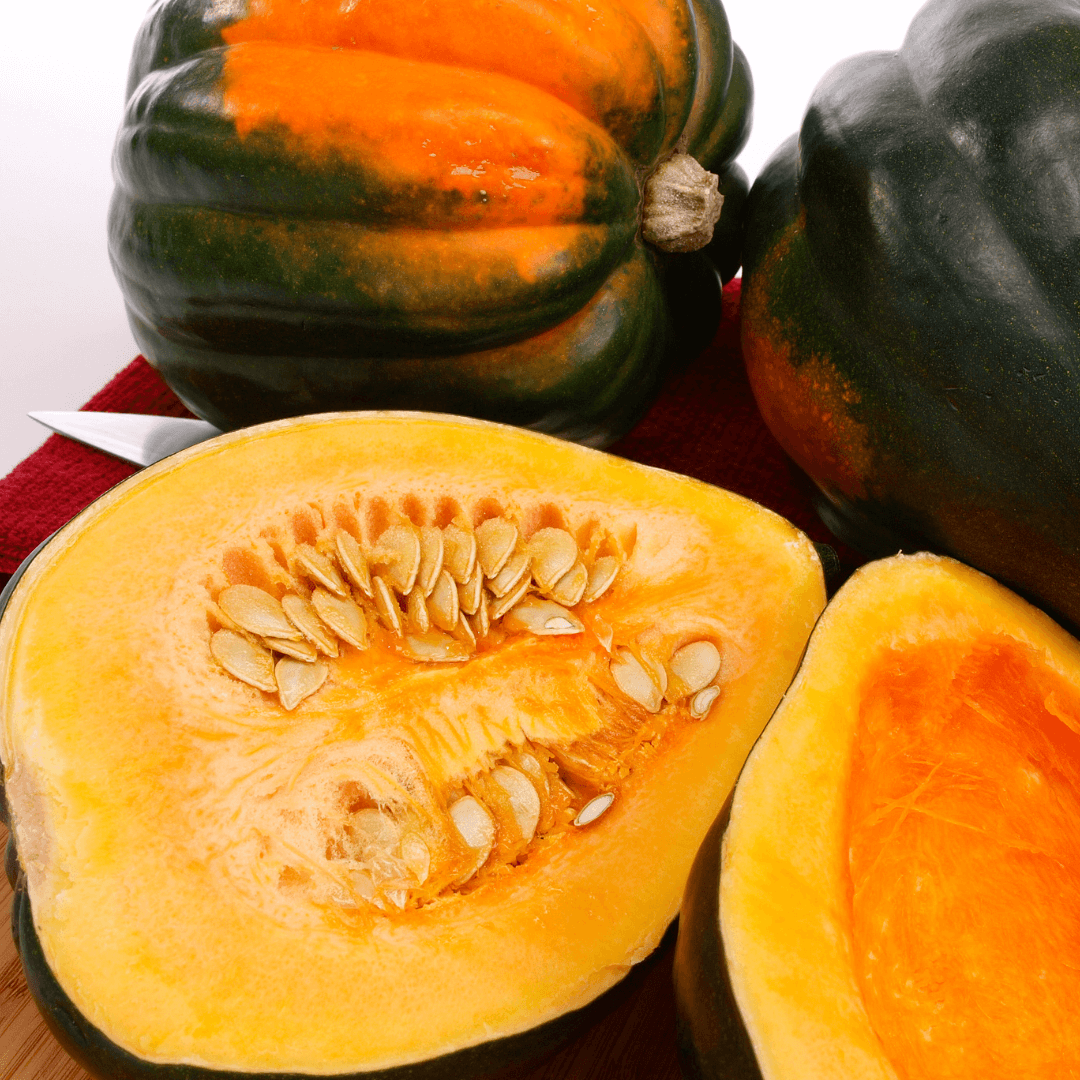 Canva
Canva
4 Acorn squash
Although it can be found among pumpkins, butternut squashes, and delicata squashes in fall, acorn squash belongs to the same family as zucchini. It has dark, shiny skin with longitudinal ridges and a mild, nutty, buttery flavor. The skin is edible when cooked.
How to use it: Thanks to its buttery flavor, acorn squash is delicious when you toss it with a neutral oil, cinnamon, a pinch of nutmeg, and a little bit of brown sugar. It’s also delicious when stuffed, pureed, or used in risotto, and shines when halved and roasted with oil, salt, and pepper.
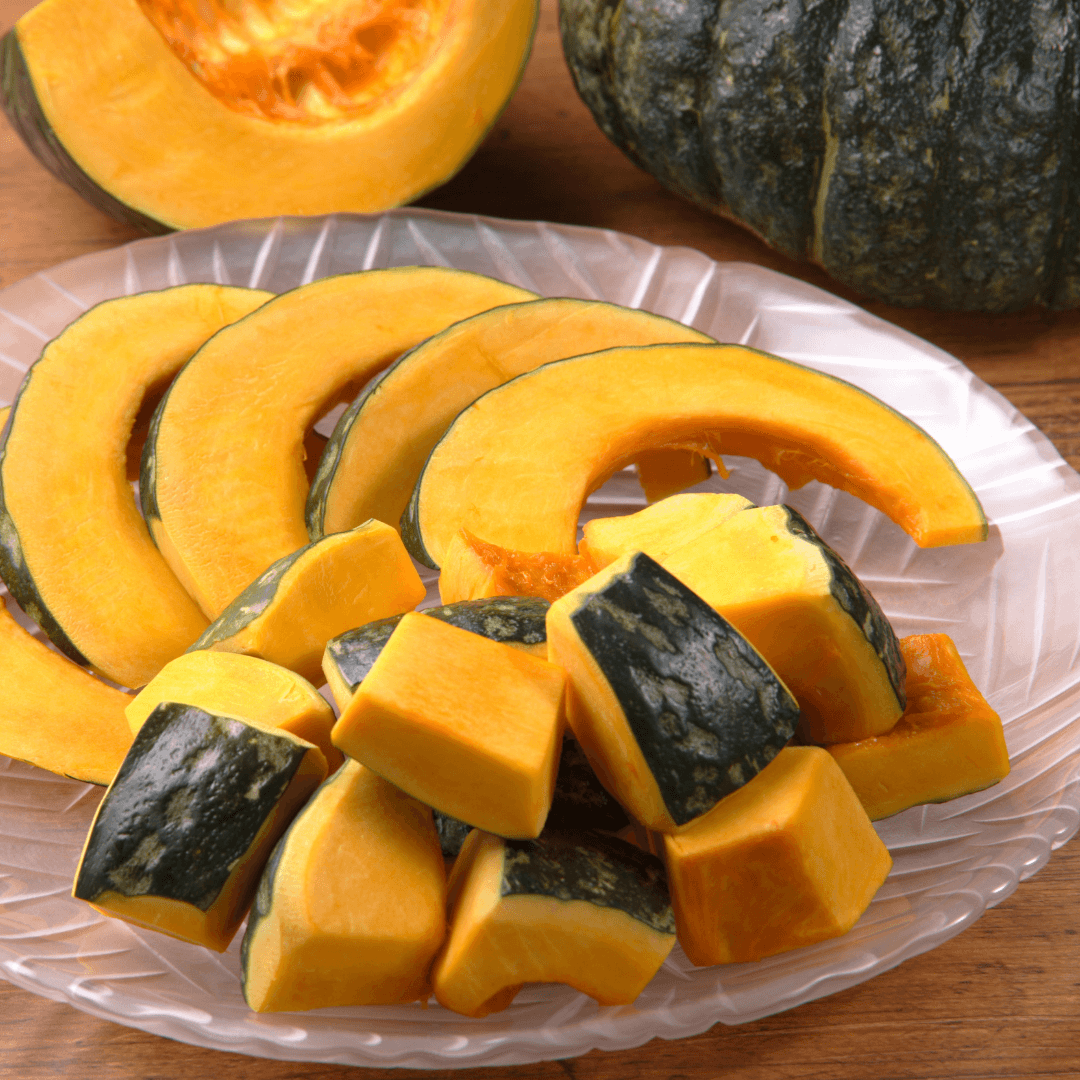 Canva
Canva
5 Kabocha
Also known as Japanese pumpkin, kabocha is a winter squash with dull, dark green skin and sweet, slightly dry flesh with notes of chestnut. Its skin is notoriously difficult to cut through, so make sure that you use a sharp knife.
How to cook it: Try it in this roasted kabocha squash soup and adjust the seasoning to your liking. It pairs well with thyme, sage, and rosemary.
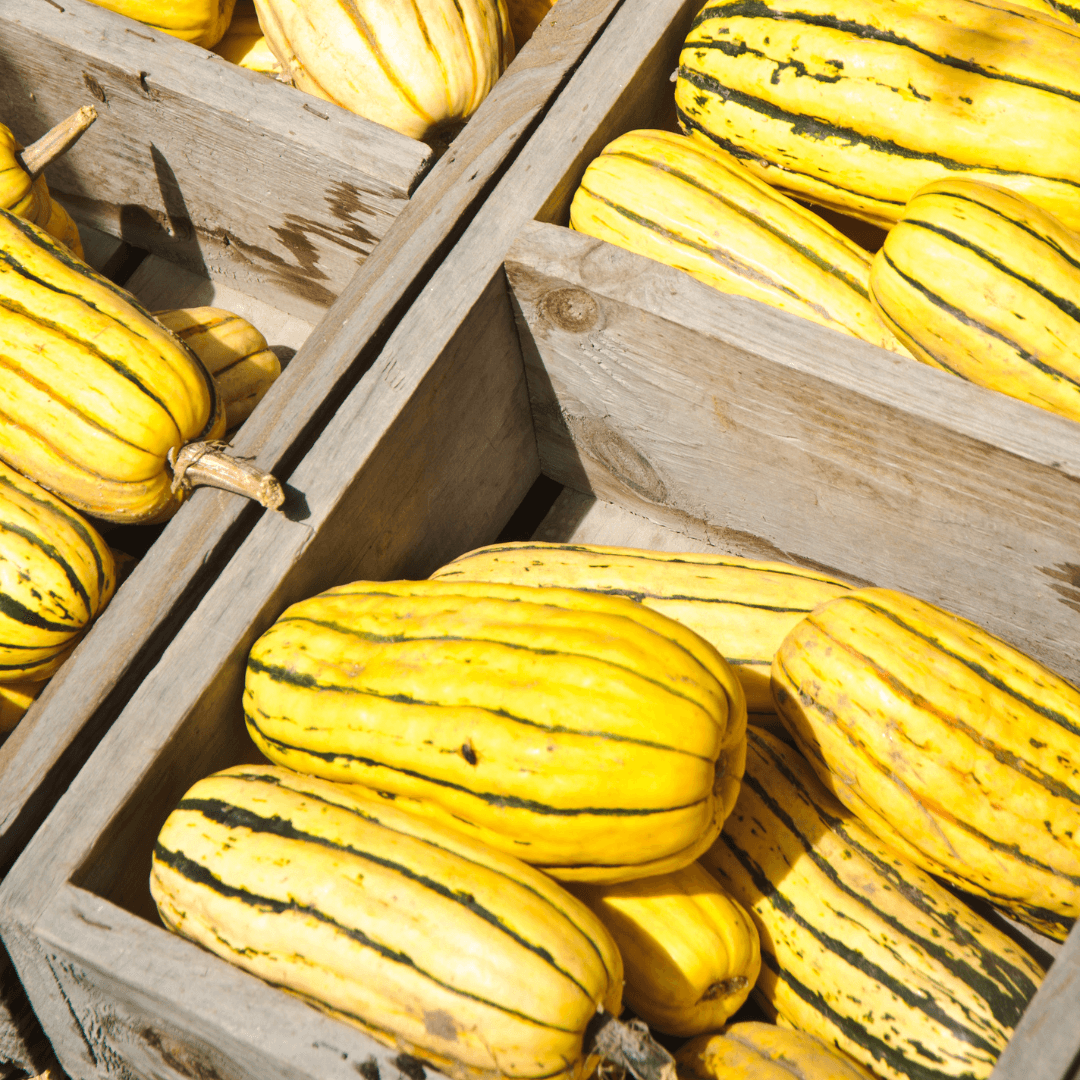 Canva
Canva
6 Delicata squash
Some winter squashes, like kabocha and butternut, can be tough to cut through, but that’s not the case with the sweet and nutty delicata squash. Knives cut easily through this groovy, cylindrical, yellow-and-green squash, which has a creamier texture compared to other varieties.
How to cook it: Halve it and stuff it or cut it into half-ring shapes, scooping out the seeds. Dairy-free butter, salt, and cracked black pepper bring out a deeper nuttiness.
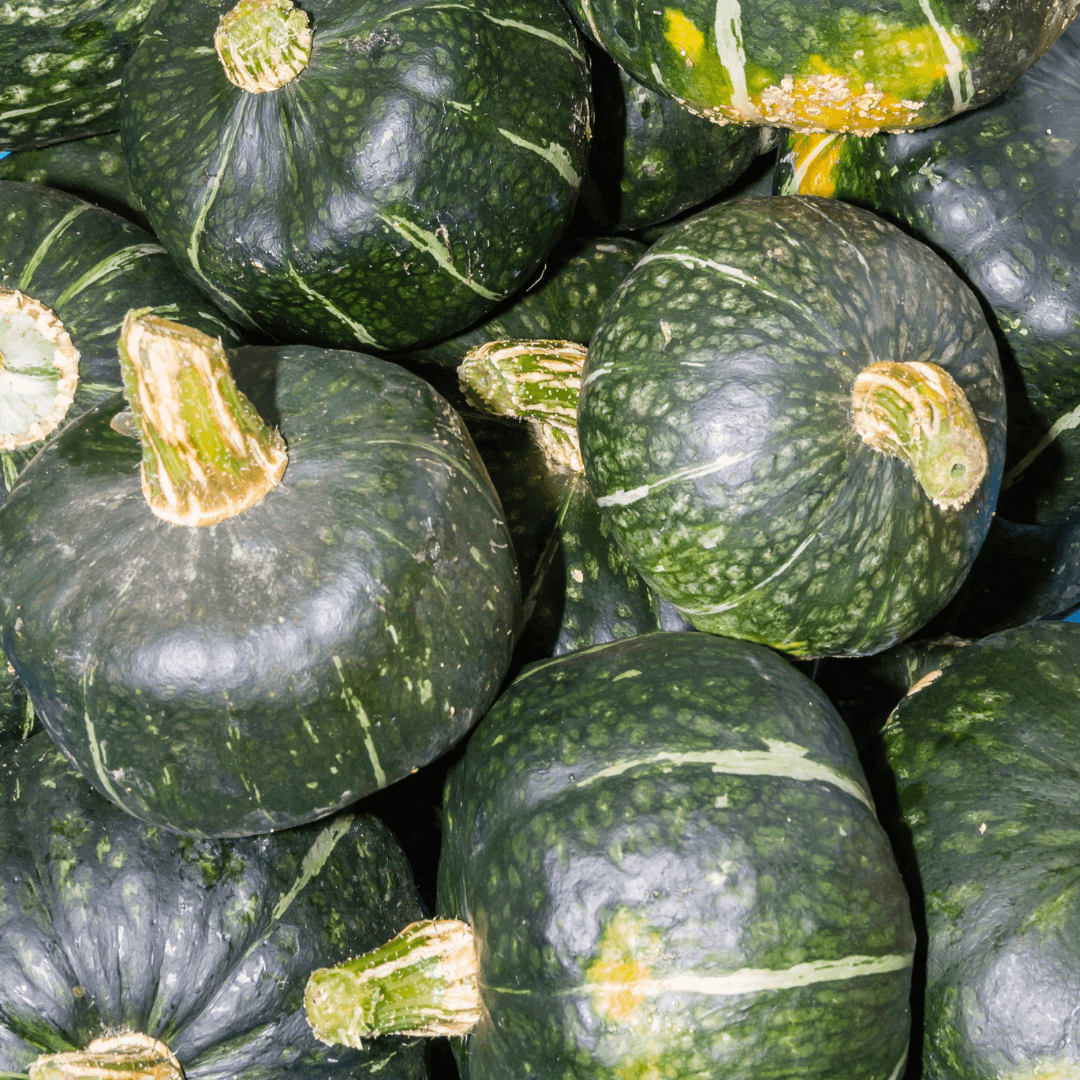 Canva
Canva
7 Buttercup squash
With its dark green flesh and round, squat shape, buttercup squash looks like it could be kabocha’s sibling. It has dark orange flesh that tastes sweet and creamy.
How to cook it: Buttercup squash is versatile, so you can roast it or steam it. Its creamy texture complements pureed soups, like this pumpkin soup with white beans.
These are some of the most common winter squash varieties. But, the farmers’ market or your local grocery store may have options that aren’t on this list, including carnival squash, hubbard squash, turban squash, and sweet dumpling squash. If you want to cook with these, follow the roasting, steaming, or microwaving instructions above.
For more on vegan nutrition, read:
JUMP TO ... Latest News | Recipes | Guides | Health | Subscribe

